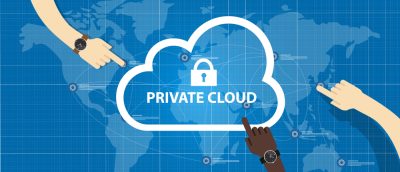Highlights:
- The voyage through the lifecycle of FinOps cloud services unfolds through three distinct phases: Informing, Optimizing, and Operating.
- Practitioners leverage automation and specialized tools for cost management, executing actions that seize optimization chances while curbing wasteful spending.
The multi-cloud approach has emerged as the quintessential operational paradigm in contemporary organizations.
However, orchestrating the migration of processes and applications to this cloud-based sanctuary requires an intricate coordination of departments, resources, and variables.
For enterprises deeply entrenched in the cloud ecosystem, the need to finely calibrate their utilization of cloud resources and services has taken center stage.
This need poses a formidable challenge. This confluence of circumstances has paved the way for a nascent discipline: Cloud FinOps, a domain devoted to the intricacies of financial operations in the cloud. But what is this technology, and why are companies using this cultural practice?
What is FinOps?
The FinOps tool is an evolving discipline in cloud financial management alongside the complex hybrid and multicloud environments landscape.
The term itself is a fusion of “finance” and “DevOps,” serving as a reminder that the collaboration between IT, finance, and business units is essential to infuse financial accountability into the cloud domain.
This collaboration facilitates data-driven decision-making when navigating the intricate balance between speed, cost, and performance.
Contrary to a common misconception, cloud FinOps isn’t solely about curbing cloud expenditure. Instead, it operates as a catalyst for eliminating obstacles, empowering engineering teams to expedite the delivery of enhanced features, applications, and migrations.
Moreover, it stimulates interdisciplinary discussions on where and when investments should be channeled. The key here is to understand the rationale behind spending decisions, whether they involve tightening the budget or expanding investments.
The rapid surge in cloud infrastructure adoption has upended conventional consumption models and procurement cycles. The FinOps cloud takes charge of procurement, centralizing it within a dedicated team.
This team advises stakeholders and promotes best practices for optimizing cloud costs. It introduces a shared lexicon that empowers organizations to navigate the expansive cloud landscape at scale seamlessly.
Beyond its role as a discipline and cultural ethos, the technology manifests in the FinOps Foundation, a nonprofit entity nested within the Linux Foundation.
Comprising members from diverse companies and organizations, the foundation champions the FinOps discipline, fostering its growth and application across the digital landscape.
In this rapidly evolving technological world, businesses rely extensively on cloud services, and understanding the intricacies of cloud FinOps becomes paramount.
By unraveling the inner workings of this technology, organizations can harness its principles to strike the delicate balance between innovation, agility, and fiscal responsibility in their cloud endeavors.
How Does Cloud FinOps Work?
Cloud FinOps practitioners focus on three pivotal domains: cost optimization, forecasting, and accounting.
In these realms, they harness the power of automation and specialized cloud cost management tools to enhance operational efficiency and exercise precise control over costs.
The voyage through the lifecycle of FinOps cloud services unfolds through three distinct phases: Informing, Optimizing, and Operating.
These phases provide a structured framework for comprehending the intricacies of the FinOps processes. Let’s delve deeper into this orchestrated journey.
-
Inform
In the “Inform” phase, we lay the groundwork for the FinOps roadmap. This phase empowers organizations to view their cloud spending through accurate budgeting, cost allocation, and predictive insights.
It delves into understanding cloud expenses, performance analysis, and industry benchmarking.
While individual cloud providers like Microsoft Azure, AWS, and Google Cloud offer their data, a dedicated FinOps cloud financial management solution might be essential for a comprehensive view across clouds.
This visibility is a guiding light, revealing who’s spending what and why across all cloud platforms. It’s akin to having a clear map in a complex cloud landscape, eliminating navigation blindspots.
Crucially, as significant cloud users, developers and engineers receive timely cost visibility with budget alerts. The goal is responsible financial behavior.
Cloud FinOps practitioners employ cost monitoring and reporting tools to empower developers for optimized spending.
-
Optimize
Moving to the “Optimize” phase, we encounter strategies to enhance efficiency. Imagine right-sizing resources, automating non-continuous workloads, and capitalizing on cloud provider discounts through strategic reservation planning.
Cost optimization is central to FinOps cloud ability. Practitioners leverage automation and specialized tools for cost management, executing actions that seize optimization chances while curbing wasteful spending.
The overarching objective is cost reduction alongside effective cloud resource utilization.
-
Operate
Lastly, in the “Operate” phase, continuous evaluation takes precedence. This involves scrutinizing business metrics, aligning with objectives, setting policies, and establishing workflows for maximum cloud value.
Practitioners here ensure cloud operations run smoothly, like a well-oiled machine, using effective logistics and a robust cloud management platform.
By focusing on these three pillars, practitioners in cloud FinOps enable organizations to economize on cloud expenses while maximizing cloud investment value.
But why is FinOps essential in the cloud-centric environment of today? The complex and dynamic cloud landscape, where cost management and resource optimization are crucial, holds the key answer.
Why Do We Need FinOps?
Moving to the cloud can yield substantial cost savings, with IT professionals reporting an average 20 percent reduction in expenses. However, these savings are only guaranteed for some migrations.
The real beneficiaries of cloud adoption are those who prioritize robust financial planning and governance.
With a sound FinOps operation, organizations can avoid incurring unnecessary expenses, paying for unused tools, or maintaining obsolete licenses. Even with the inherent cost-saving potential of the cloud, unmanaged spending can spiral out of control.
FinOps aims to consistently optimize cloud costs; ensuring teams derive maximum value from minimal expenditure.
Managing cloud technology infrastructure differs significantly from on-premises solutions. Over several years, the traditional financial model involves resource purchase, depreciation, and amortization.
Transitioning to a FinOps model shifts the focus to real-time operational expenses, enabling precise cost monitoring. Cloud’s scalability reduces memory limitations, but financial vigilance remains crucial.
FinOps, an industry-wide practice, empowers firms to maximize cloud investments, streamline IT infrastructure, and accelerate product development, ultimately driving revenue growth.
Closing Lines
In cloud financial management, FinOps emerges as an evolving discipline, adapting to the intricate hybrid and multicloud environments.
The fusion of “finance” and “DevOps” underscores the vital collaboration among IT, finance, and business units, instilling financial responsibility in the cloud domain.
Contrary to misconception, the meaning of cloud FinOps isn’t just about cost-cutting; it empowers teams to deliver better features, fostering insightful investment discussions.
As cloud storage adoption shifts paradigms, the technology centralizes procurement, while the cloud ability FinOps foundation promotes its growth.
Within cloud finance operations, practitioners use automation and specialized tools to target cost optimization, forecasting, and accounting.
The journey unfolds in three phases: Inform—gaining clarity on cloud spending, Optimize—enhancing efficiency, and Operate—maximizing cloud value.
Practitioners armed with these principles empower organizations to economize on cloud expenditure while extracting the utmost importance from their investments.
You can expand your knowledge by exploring our extensive selection of cloud-related whitepapers.

























































